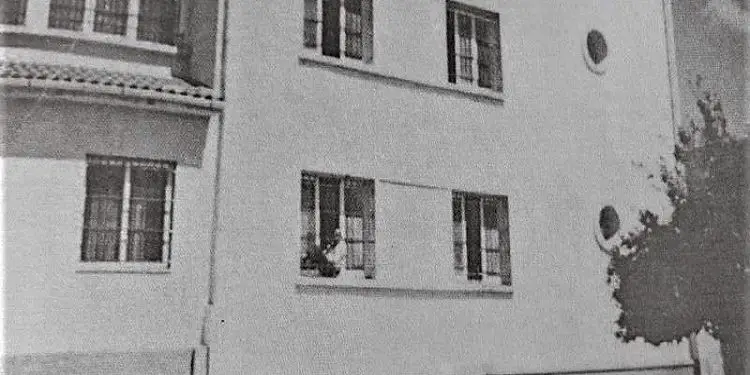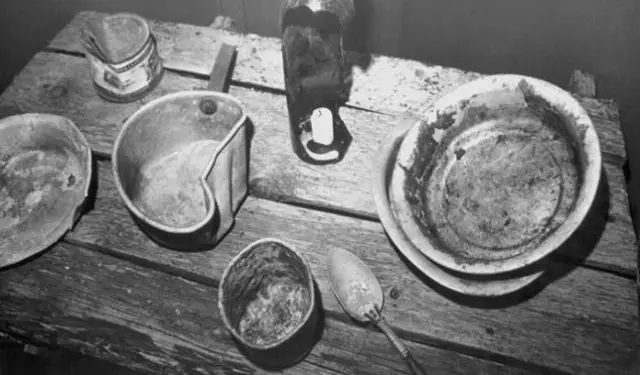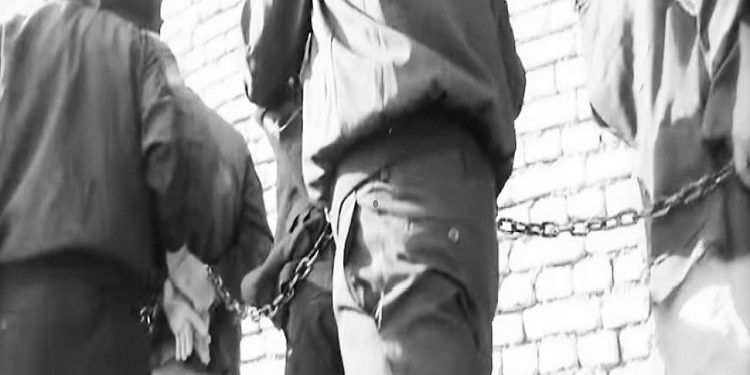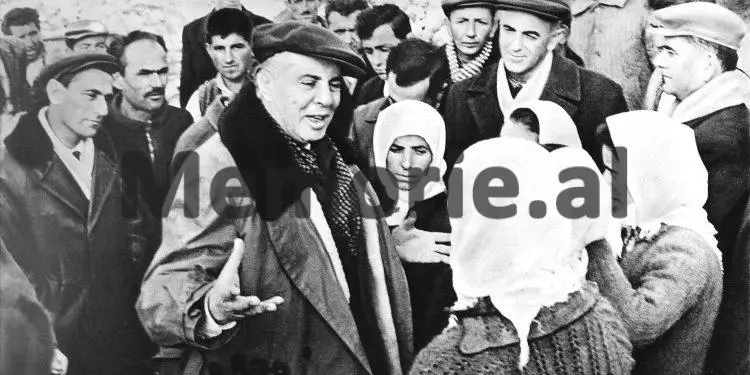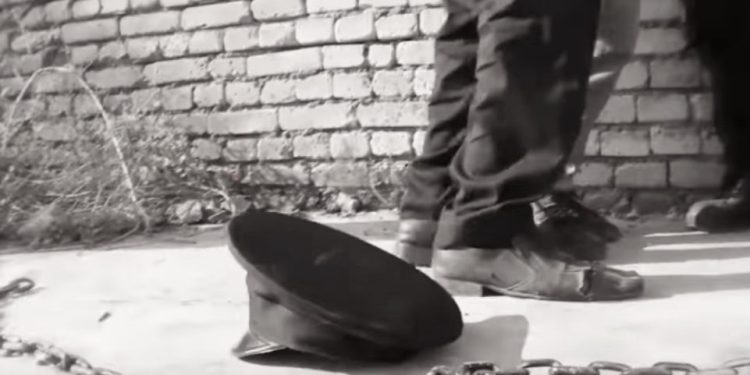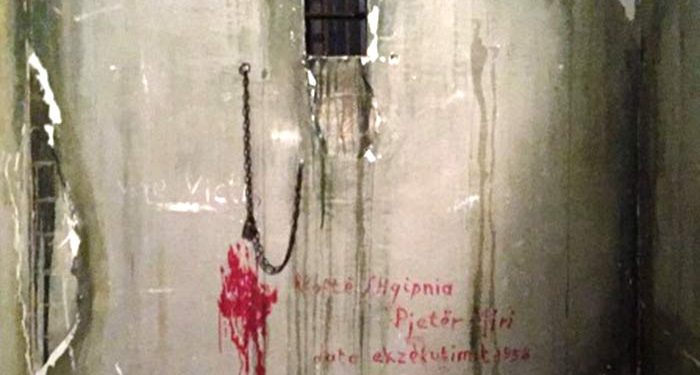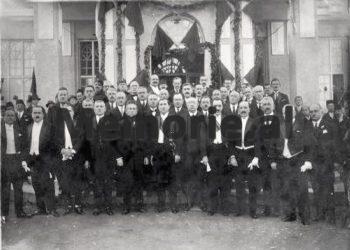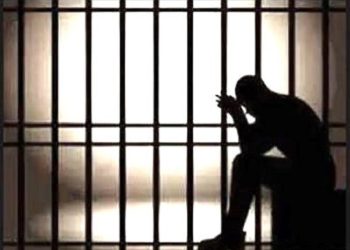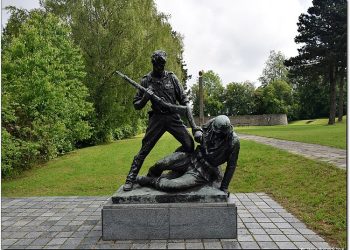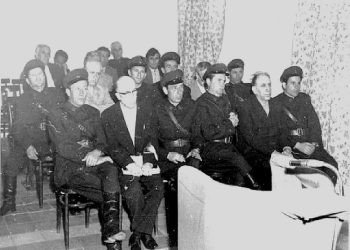From Agim Musta
Part eleven
Memorie.al / On the fourth anniversary of the passing away of the well-known historian, researcher, writer and publicist Agim Musta, (July 24, 2019), former political prisoner, his daughters Elizabeta and Suela, gave him the right to exclusivity for the publication, by the online media Memorie.al, of one of the author’s most prominent publications, such as the ‘Black Book of Albanian Communism’. This work contains numerous data, evidence, facts, statistics and arguments unknown to the general public, on communist crimes and terror in Albania, especially against intellectuals, in the period 1945-1991. The publication for the first time of parts of this book is also the realization of one of the bequests of the historian Agim Musta, who, from the beginning of 1991 until he passed away, for nearly three decades was engaged with all his powers, working to raise collective memory, through book publications and publications in the daily press. All that voluminous work of Mr. Agim Musta, concretized in several books, is a contribution of great value to the disclosure of the crimes of the communist regime of Enver Hoxha and his successor, Ramiz Alia. A good part of the publications of Mr. Agim Musta, is also translated into English. Thanking the two daughters of the late Musta, who chose Memorie.al, to commemorate their father, from today we are starting the publication, part by part, of the “Black Book of Albanian Communism”.
Continues from last issue
-Political trials of the Albanian communist regime-
(1945-1991)
“Death Pavilion”!
It is not known who named the “Death Pavilion”, pavilion No. 3, of Tirana Prison Hospital. Surely there would have been some political or ordinary prisoner, who had escaped the claws of death, in that pavilion. God knows what his eyes had seen, the anonymous convicts. Every month, dozens of prisoners from prison camps came to the ‘death pavilion’ to be operated on. Among them, there were stomach ruptures, nephritis, ulcers, hernias, etc., but the majority were mine accident victims, who worked in medieval conditions. Forty thousand political and ordinary prisoners worked as slaves in these mines.
Bulqiza, Batra, Spaçi, Qafë-Bari, had become synonyms of the Dantesque Hell. The postulate of the Mongolian-Jewish Vladimir Ilic Lenin, that: “Enemies and criminals should be kept in labor camps, in a half-starved condition”, was implemented in Albania.
The operating theater of the ‘death ward’ had not one, but four beds. The surgeon of this ward, Avdi Bala, operated at a dizzying speed. The galleries needed slave workers to keep the creaking mechanisms of the dictatorial state afloat. Out of four prisoners who were operated on, one died. This was called victory. The balance was positive, 75 percent. What was done with the corpses of the unfortunate, no one knew. It was said that some corpses were used as sample and some were exported abroad. The truth is never to be learned.
The ‘Death Pavilion’ has been operating regularly for 40 years in a row. How many have been operated on, how many have died, no one knows. The surgeon of Pavilion No. 3 had become a legend. The convicts of all Albania kept his name in their mouths. He had turned into a Joseph Mengel, of Albanian prisons and camps. One of the blockmen proposed that he go to France to specialize in one of the loudest clinics in Paris. The doctor left for Paris. The French professor was horrified when the Albanian doctor performed an operation with lightning speed.
“Even animals are not operated like this” – said the professor, Avdi Bala, and invited him to his office. – “Please, Mr. Albanian surgeon! Tell me, how many patients have you operated on in a decade”? “About 3000 thousand people” – surgeon Bala answered them proudly. “Mon die, set incredible”! – whispered the Frenchman, rolling his eyes. – Mr. Bala – within a decade, I have not operated on more than 300 patients. I cannot imagine the conditions under which you operated. You must leave immediately from my clinic. I believe you understood me.” Avdi Bala, came out of the clinic of the famous French professor, as if he was coming out of a boxing ring, after a difficult match. He took a taxi and went to the Albanian embassy. After two days he left Paris and returned to Tirana. The pavilion of death welcomed him with open arms.
Brain destruction
A. The mentally ill in prisons and forced labor camps
One of the blackest stains of the Enverian dictatorship is the cruel treatment of the mentally ill in the investigator, during the trial, in prisons and in psychiatric hospitals. How many mentally ill have been arrested?! How many have gone crazy in the investigative processes? How many have been convicted by the courts of the dictatorship? How many mentally ill people have been shot? How many have committed suicide? How many mentally ill political prisoners have been mutilated or disappeared in the psychiatric hospitals of Vlora, Tirana and Elbasan?!
No one knows the exact number and the truth will never be known. The bloody hand of the Security did not stop to arrest the mentally ill, publicly known and treated in psychiatric clinics. I remember:
- Xhafer Dema, in 1963, after being encouraged by some provocateurs in a pub in Tirana, shouted “Long live the Bird”! it’s just that Zogu had been dead for 2 years. He is treated cruelly in the interrogator and sentenced to 8 years in prison.
- Qemal Gega, veterinary doctor graduated in France, 1 brother of Liri Gega, although mentally ill and at the age of 70, is arrested and sentenced to 10 years for agitation and propaganda: A significant part of the political detainees suffered psychological trauma during the torture in the investigator, and the “people’s courts”, outside of any legal norm, punished these unfortunates without taking into account their state of health.
- Such was Petro Rondo from Himara, crazy in the investigator, in 1965, and the court sentences him to 25 years in prison. Petroja worked for 22 years, in the Spaçi galleys, howling like a rabid wolf, without any medication, without any treatment.
- Hajri Pashaj, from Hekali i Mallakastra. His father was shot by the communists and he went crazy in the interrogator, at the age of 20. The trial sentenced him to 20 years in prison. When the Spaç Revolt took place, in May 1973, the Director of State Security, Feçor Shehu, fellow villager of Hajri, was sent to Spaç to quell the revolt with iron and fire. In a threatening conversation with the prisoners, after the suppression of the revolt, Feçori says to Hajri: “You are an enemy. You also had an enemy with your father, therefore, as we did to him, we will do the same to you.” “!
“Eat me…” – answered Hajriu, very angry. In that situation, only a madman could have the courage to say those words to him. After that Hajriu is shot, together with 3 prisoners others, in an abyss of Spaçi. With Hajri, I suffered 6 years of punishment and everyone knew that he was mentally ill.
- Kujtim Çuni, from Kukësi, escaped with his whole family to Yugoslavia in 1949, when he was 2 years old. He goes to Australia with his family and at the age of 16 he returns to Albania hiding in the barns of an Italian ferry. Arriving in his native land, he is arrested and tortured until he goes mad, to get him to confess that he was a CIA agent. He doesn’t say a word in court, but they sentence him to 10 years in prison. They dropped him in the Fushë-Kruja camp, where he destroyed everything, he found in front of him, especially the barbers’ mirrors. The guards beat him every day and kept him handcuffed. They removed him from the camp and we did not learn anything about his fate.
- Koço Gjini from Korça, former Security officer. He is sent as a “fugitive” to France, in 1960, with a mission to kill Jepi (Sadik Premten). Upon arriving in Paris, he changes his mind and does not complete the mission assigned to him by the “ustallars”. Albanian security attempts to assassinate him, but he escapes seriously injured. He was placed in a Paris hospital by the French authorities and with the intervention of the embassy, he was sentenced to 25 years in prison. He had a big body and a thick voice, like a bear. Summer and winter he wandered around the camp barefoot and dressed in a jacket. He was hungry like a wolf and ate the garbage that was thrown in the garbage. He was constantly talking to himself, repeating the word; Pocket, Pocket, Pocket!
- Aristidh Hasera, from Dropulli, excellent student. He is arrested at the age of 18, goes crazy in the interrogator and commits suicide in Spaç, at the age of 23.
- Fadil Kokomani, brother of former general Muharrem Kokomani, Durrsak journalist. Sentenced to death, in 1963, for his political views, but not executed, because he suffered psychological trauma during the trial. He is not given any medical treatment and is forced to work with a whip over his head in forced labor camps. In 1978, being insane, he was again sentenced to death and shot in Spaç, together with Vangjel Lezhon and Xelal Koprencka.
- Gjok Hoti, from Bajza e Shkodra, mentally ill in Spaç, is re-sentenced for another 10 years while serving the first sentence.
- Ali Goxhaj, from Konispoli, former secretary of the Executive Committee, was arrested as a “conspirator” with Teme Sejko’s group in 1960. He suffered psychological trauma from the torture of the investigator. He was sent to the Elbasni Psychiatric Hospital and after 10 years he was discharged from the hospital without recovery and sentenced to 25 years in prison. Insane, he serves a 20-year sentence, working in forced labor camps. Today he wanders around Albania, without a pension and without a cure.
- Nejdhet Dalasi, from Devolli i Korça. Mad at the investigator. He was sentenced 3 times to 10 years in prison, for agitation and propaganda, being admitted to the Psychiatry of Elbasan.
- Nush Huli from Fushë-Kuqe village of Kruja, teacher. He was arrested at the age of 22, in 1960, accused of preparing an assassination attempt against Mehmet Shehu. He goes insane during the investigation, but is sentenced to death. The Presidium returned the sentence to 25 years of imprisonment. They brought him to the prison of Burrel, in 1963, after they had kept him for 3 years, in the Psychiatric Hospital of Tirana.
- Mazllem … (I don’t remember the last name because it’s been a long time), Kosovar. He served his sentence in the prison of Burrell, although he was insane, during the sixties, he shouted in a hoarse voice: “Give me bread! I am God”!
Only those mentally ill who were dangerous and hindered work in the camps were sent to psychiatric hospitals. They were kept in extremely inhumane conditions, naked, dirty, barefoot, hungry, with open abscesses in their legs, with the staphylococcus germ, not to move from their bed. They were mistreated by the medical staff, many of whom were State Security officers, and as per the orders they received, they even physically exterminated them, using their “tricks”!
There have been many cases when they were thrown headfirst onto the concrete, from the upper floors of hospitals, or burned with alcohol, stolen from the medical staff. They were kept in hospitals for many years without any cure. When someone abused the leadership of the Party-state, they would punish him and take him to the galleys of Spaçi or Qafë-Bari.
In 1983, in the Saranda Progress camp, a mentally ill man who refused to go to work was beaten to death by guards. Another mentally ill person, in this camp they stripped him naked in the winter frost, tied him to a pole and left him there until he died. Many Security and Army officers who knew “secrets” were given drugs to lose their memory when they were sentenced. It was common to use narcotics during interrogation to weaken the nervous system. I have felt the effects of these drugs as well. several years after the sentence.
Many political prisoners have suffered all their lives from their actions. This was evident in the silos of Spaçi and Ballshi, where there were mostly sick prisoners. “Chekhov’s Ward No. 6 was heaven, compared to our psychiatric wards.
According to the Criminal Code of the communist dictatorship, when the prisoner was sentenced to death and suffered psychological trauma, the decision could not be executed, without the report of a commission of psychiatrists, who had to prove that the prisoner was fully responsible. In many cases, unskilled doctors were unable to distinguish the simulant from the mentally ill.
Then, these charlatan doctors were helped by the State Security with “dungeon rats”, who were “specialists” to determine if the person condemned to death was really insane or a simulant. These were put in the cell together with the condemned and stayed there until they found out the “truth”, their word led to the bullet, or to the psychiatric hospital, the unfortunates sentenced to death. And the “respected” doctors, after throwing the signatures on the medical report, they extinguished the tug of conscience with glasses of cognac.
The people with psychic trauma, which were mentioned above, I have personally known during my 13-year sentence. I can say with certainty that there were several hundreds of political prisoners with psychological trauma during the half-century period of the communist dictatorship in Albania.
B. Prison epileptics
How many epileptics there were in the prisons of the dictatorship! There were those who had been like this even before the arrest, but most of them had become epileptic from the consequences of the torture during the investigation. Not all epileptics were known by fellow sufferers and prison doctors. They kept the disease hidden and it was known only when it appeared violently.
I will never forget that unfortunate incident that happened in the yard of Elbasan prison camp on a Sunday in March 1967. Beqir Starova, an old prisoner, 1 m. and 90 cm. tall, that suffering and torture had alienated him into a prehistoric being, provoked by a prison guard, he stretched out as wide as he could in the camp yard, letting out shrill screams.
Within a few minutes, for induction, 20-30 prisoners fell to the ground, gripped by epileptic seizures. They hit the ground, like slaughtered rams, and the screams they let out made the shirt tremble at the waist. The courtyard of the prison camp had turned into an arena of epileptics, where they collided in the dust, drooling, with shrill screams, to freeze the flesh. No prisoner had ever experienced such an event before.
We lined up in an arc, with faces as yellow as lemons, and some fellow sufferers ran to help their fellow epileptics, holding them by the head, hands and feet, so as not to suffer serious injuries. The doctor with a golden heart, Miço Konomi, and nurse Osmani, went around the sick in shock, without having the opportunity to bring them out of the convulsive state they were in. The officers and guards of the camp, mounted on their carriages, grimaced and rubbed their hands, contemplating the macabre sight.
“And what did these people have? Nobody beat them”?! – said one of them. “You have to be careful, that it is not a game, to organize a mass escape!” – added another, who pretended to be smarter than the others. The tragic condition of the epileptics did not last more than 10 minutes. They remained on the ground motionless, drool dripping from the corners of their lips.
The fellow sufferers took them in their arms and carried them to their beds. It would be days, maybe even weeks, for those unfortunates to recover. That shocking scene cannot be separated from my mind and I often see it even in my sleep, although almost 40 years have passed. Memorie.al
The next issue follows




